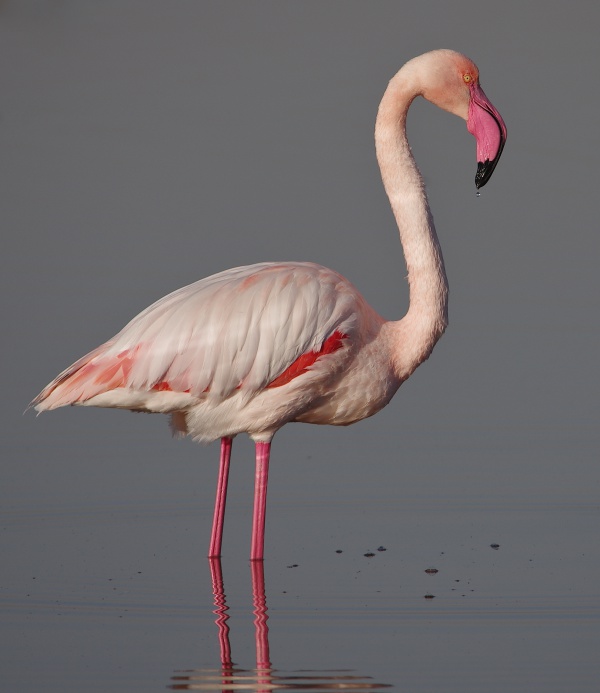Facts About Greater flamingo
The greater flamingo is the largest and most widespread species in its family. These striking birds can be found in Africa, the Indian subcontinent, the Middle East, and southern Europe. First described by Peter Simon Pallas in 1811, they were once thought to be the same as the American flamingo. However, distinct differences in coloring have since confirmed that they are separate species. Notably, the greater flamingo does not have any subspecies.
These elegant birds are easily recognized by their pinkish-white plumage, black flight feathers, and eye-catching pink bill and legs. Adult greater flamingos typically stand between 110-150 cm tall and weigh between 2-4 kg. The largest males can reach up to 187 cm in height and weigh around 4.5 kg. Their beautiful coloration comes from the carotenoid pigments in their diet and secretions from their uropygial glands. During the breeding season, they even enhance their color by spreading these secretions over their feathers, much like applying "make-up."
Greater flamingos inhabit mudflats and coastal lagoons with saltwater. They feed by filtering small shrimp, seeds, algae, and mollusks through their bills. For reproduction, they lay a single chalky-white egg on a mud mound. In captivity, these birds can live over 60 years, while in the wild, they generally have a lifespan of 30-40 years.
However, life isn't always easy for these flamingos. Natural predators include raptors, crows, gulls, and the marabou stork. The yellow-legged gull, in particular, poses a significant threat to their eggs and chicks. Human activities also pose dangers, such as pollution, toxins, and habitat destruction.
On a more positive note, captive breeding programs have been extraordinarily successful. For example, Zoo Basel has bred these birds successfully, with some individuals living into their 80s. A famous example is a flamingo at Adelaide Zoo in Australia, which lived to at least 83 years before being euthanized due to complications from old age.

 Algeria
Algeria